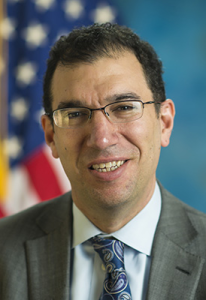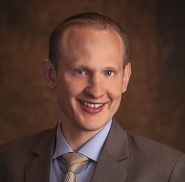Clinical laboratories and pathology groups can expect to see more growth in the number of patients served by ACOs and that will require labs to have a new pricing strategy
Will ACOs be the next big thing in American healthcare? Many people are betting that will be true as the number of ACOs continues to increase. Some reports indicate that as many as 750 Medicare and private ACOs were in operation as of early 2015, compared to about 250 ACOs in 2013.
Pathologists and clinical laboratory managers watching the ACO trend will find it significant that Medicare ACOs now serve about 5.6 million beneficiaries. According to a report issued by Oliver Wyman, that is about 11% of all Medicare beneficiaries. Providers in these ACOs are paid under a different arrangement than the long-established Part B fee-for-service price schedule.
The big question mark about ACOs is whether they can deliver significant cost savings while improving patient outcomes. This summer, officials at the federal Centers for Medicare & Medicaid Services (CMS) reported on the savings generated by the agency’s pilot ACO programs. The two main accountable care organization programs are the Medicare Shared Savings Program (MSSP) and the Pioneer ACO Program.
29% of Medicare Pioneer ACOs Received Bonuses for Achieving Targets
The Centers for Medicare & Medicaid Services is counting on ACOs to improve the quality of care and control costs for the Medicare system. According to a CMS statement detailing the 2014 results, 92 of the 333 MSSP ACOs combined to hold spending $806 million below their targets and earned performance payments of more than $341 million as their share of program savings.
Among the 20 Pioneer ACOs participating in 2014, 11 organizations generated savings above the minimum savings rate and earned shared savings payments of roughly $82 million.
In total, 103 Medicare ACOs, or 29%, received bonuses last year.
Medicare ACO’s Performing Better Every Year of Pilot Program
CMS also noted, “ACOs with more experience in the program tend to perform better over time.” Among ACOs that entered the program in 2012, 37% generated shared savings, compared to 27% of those that entered in 2013 and 19% of those that entered in 2014.
“These results show that accountable care organizations as a group are on the path towards transforming how care is provided,” said CMS Acting Administrator Andy Slavitt in a statement.

“Many of these ACOs are demonstrating that they can deliver a higher level of coordinated care that leads to healthier people and smarter spending,” stated Andrew Slavitt (above), Acting Administrator at the Centers for Medicare and Medicaid Services. (Photo copyright: Centers for Medicare and Medicaid Services.)
Other highlights from the 2014 quality and financial performance report include:
• In year three of the Pioneer ACO program, the 20 remaining participants increased their beneficiary count by 2% over 2013 levels, making them responsible for more than 622,000 beneficiaries.
• Eleven Pioneer ACOs qualified for shared savings payments of $82 million. Of the five Pioneer ACOs that generated losses, three generated losses outside a minimum loss rate and are paying CMS $9 million in shared losses.
• No Track 2 MSSP ACOs owed shared loss payments to CMS.
• MSSP ACOs reporting on quality measures in 2013 and 2014 improved on 27 of 33 metrics, including electronic health record (EHR) use; screenings for tobacco use; and, hypertension screening.
Tangible Proof of Positive Impact Motivates CMS to Increase Participation
In December 2014, CMS announced the addition of 89 ACOs to the MSSP program, pushing participation to a total of 405 ACOs, serving more than 7.2 million beneficiaries. Combined with the remaining 19 Pioneer ACOs, government-backed programs serve more than 7.8 million original Medicare beneficiaries.
“This is hard work but our physician partners are getting increasingly comfortable with these activities and we now have tangible proof of the positive impact they are bringing to the quality of care and healthcare costs for Medicare beneficiaries,” stated Richard Barasch, Chief Executive Officer of Universal American, a management services firm that works with doctors on their value-based care arrangements, in a Forbes magazine article. “We are also encouraged by the commitment shown by CMS to the Medicare ACO program in the final rule for 2016 and beyond.”
Medicare ACO Performance Trends Questioned by Some Experts
While the Obama administration is focusing on positive ACO trends, Modern Healthcare points out that the 2014 results can best be described as “a continuation of mixed results for an initiative that federal officials have targeted for rapid expansion.”
Modern Healthcare notes that the ratio of ACOs earning bonuses has not improved during the past two years, indicating that the alternative payment model may not be a magic bullet capable of stopping growth in healthcare spending.
“This shows that controlling costs is hard,” Kavita Patel, MD, Nonresident Senior Fellow at the Brookings Institution, told Modern Healthcare. “Delivering highly coordinated care is very difficult. An ACO is a start, but it’s certainly not the ultimate solution.”

Three out of four Medicare accountable care organizations failed to slow health spending enough to earn bonuses in 2014 from the Centers for Medicare & Medicaid Services (CMS), prompting Kavita Patel, MD, Nonresident Senior Fellow at the Brookings Institution, to suggest that the new healthcare model alone will not slow spending growth. (Photo copyright: Brookings Institution.)
Yet David Muhlestein, Senior Director of Research and Development at Leavitt Partners, sees staying power for the accountable care model. Writing in Health Affairs Blog, he points out that “since the start of 2014, an estimated 4.5 million more people have been included in accountable care arrangements, bringing the total to 23.5 million covered ACO lives,” with the commercial and Medicaid sectors fueling most of that growth.

David Muhlestein, Senior Director of Research and Development at Leavitt Partners, believes accountable care organizations (ACOs) must be given time to reach performance goals. (Photo copyright: Leavitt Partners.)
Leavitt Partners Center for Accountable Care Intelligence estimates total public and private ACOs at 744 as of January 2015, up from 621 in 2014, and 447 in 2013. Sixty-four ACOs existed when Leavitt first began tracking the healthcare delivery plan in 2011. Consulting firm Oliver Wyman reported in April 2015 that almost 70% of the United States population now lives in localities served by ACOs, and 44% live in areas served by two or more.
“It takes considerable time and managerial resources to become a full-fledged ACO,” Muhlestein writes. “While many organizations have failed to date to fully realize all of the goals of accountable care, many have made significant progress in transforming how they deliver care. However, a full transformation cannot be realized in just a year or two. Early findings are interesting and relevant but don’t help us predict whether any particular ACO will be successful in the long term.”
With ACOs are already serving 11% of Medicare beneficiaries, clinical lab executives and pathologists should consider this an early market signal that the ACO trend is setting down strong roots. In response, both medical labs and pathology groups would be ahead of the game to do two things. First, they should be developing a service strategy and pricing formula they can use when serving ACOs in their region. Second, the leaders in their labs should be developing stronger personal relationships with the ACO administrators and executives in their communities in order to be included in planning and contract negotiations as these ACOs continue to expand and serve larger numbers of patients.
—Andrea Downing Peck
Related Information:
Medicare ACOs Provide Improved Care While Slowing Cost Growth in 2014
Medicare ACOs Continue to Improve Quality of Care, Generate Shared Savings
Medicare ACOs Produce $411M in Savings in 2014, Many Fall Short of Bonuses
ACO Update: A Slower Pace of Growth
Obamacare’s Accountable Medicare Effort Saves Another $400M
Few Medicare ACOs Earned Bonuses in 2014
Growth of Medicare and Private Payer ACOs Shows Acceptance of New Care Model



